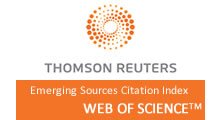Mathematically Gifted High School Students’ Approaches to Developing Visual Proofs (VP) and Preliminary Ideas about VP
Abstract
The purpose of this study is to describe the procedure and examples of visual proofs (VP-or proof without words) developed by gifted mathematics secondary school students after their experiences. The participants of this study are three male 9th grade students enrolled in a private science high school. In the first stage of the research a briefing was given to the three selected students. Then, structure and examples of VPs are discussed by the participants. During this process the researchers and participants met once a week for five weeks. The participants developed VP examples stage-by-stage. The qualitative research method was used to analyze the data gathered from both the VPs developed by the participants and also from the participants’ responses to a written questionnaire. According to analysis of the VPs, the examples were found to be in three categories. Examples of each category are presented in the study and discussed, along with participants’ thoughts about each of them.
Full Text:
PDFRefbacks
- There are currently no refbacks.
Copyright (c) 2017 International Journal of Education in Mathematics, Science and Technology








This work is licensed under a Creative Commons Attribution-NonCommercial-ShareAlike 4.0 International License.
ISSN: 2147-611X (Online)
